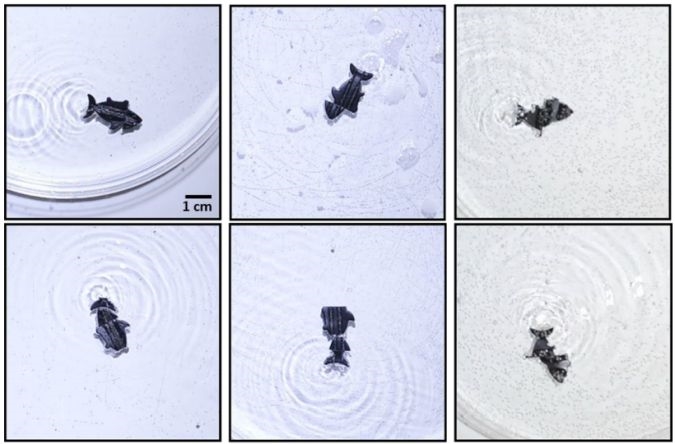Researchers create a swimming robot that can ‘heal’ itself
The microbot was able to reassemble itself in a petri dish using a magnetic strip.


As the world contemplates ways to deploy robots to help with hazardous tasks such as large-scale cleanups or search and rescue missions, scientists are also second-guessing how to fix machines if they come into harm’s way. We’ve previously seen jelly-like polymers used to create robotic hands that can repair themselves after a violent infliction. And, “biological” androids made from stem cells that can regenerate and stitch back together when sliced. The latest breakthrough involves tiny microbots that can magnetically “heal” themselves on the fly after breaking apart, without help from humans.
Researchers at UC San Diego did this by creating 2 cm long swimming robots shaped like fish and composed of three layers. The bottom and top contained a conductive part and an upper strip of magnetic microparticles, respectively, with a hydrophobic middle layer wedged in-between the two. They also added platinum to the tail, which reacted with hydrogen peroxide fuel to form oxygen bubbles that propelled the robot.
The tiny swimmer was then able to move around a petri dish containing a weak hydrogen peroxide solution. To observe its healing abilities, the scientists cut the bot with a blade. The results, on full display in the video above, show the disembodied tail travelling around until it approached the rest of the parts, reforming itself through magnetic interaction. It could also reassemble itself when cut into three parts or when the magnetic strip was placed in a different position, according to the researchers. As for its future impact, the advancement could see the capability incorporated into other, bigger robots that could then feasibly continue to do their jobs if they were somehow cut in half.
(16)